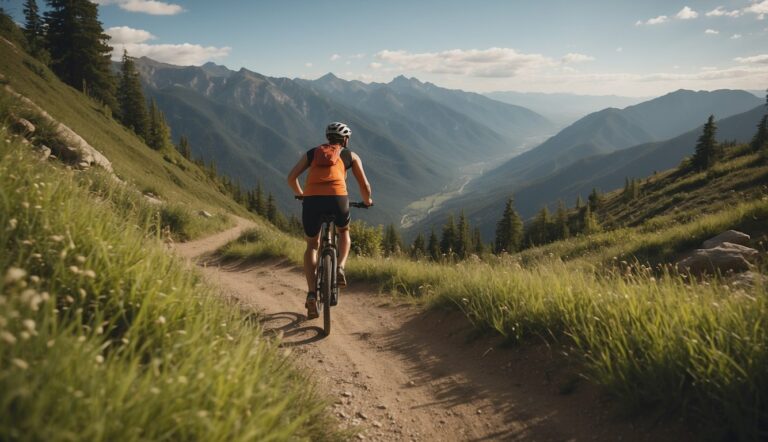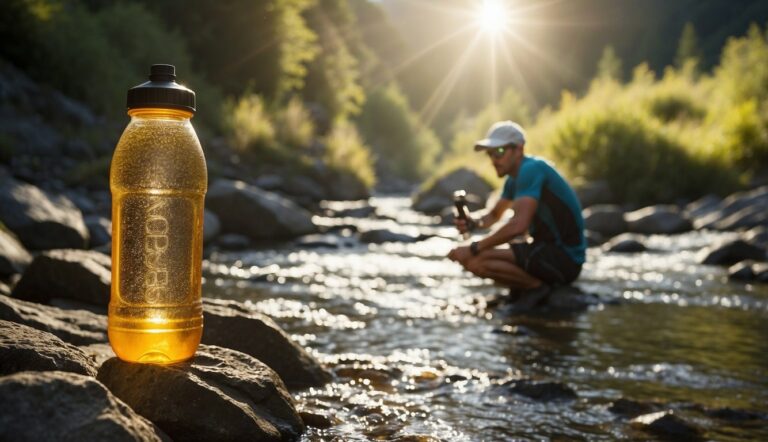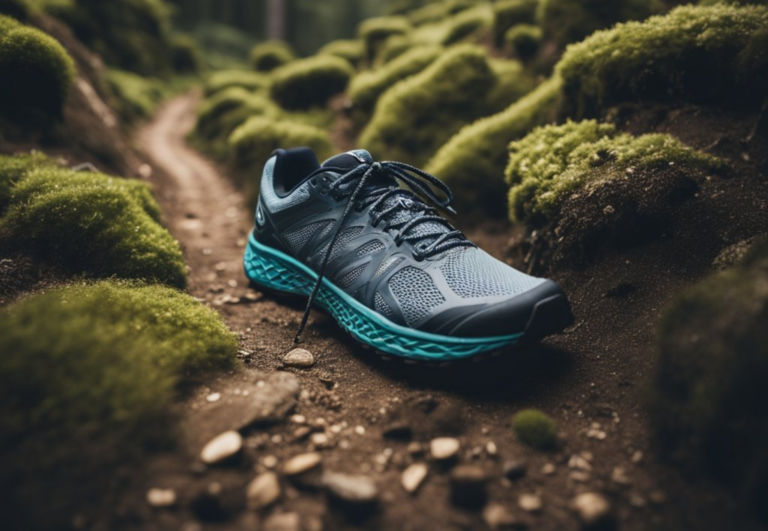Are Heavier or Lighter Trail Shoes Better? Evaluating Performance and Comfort on the Trails
As a UESCA certified running coach, I often encounter the debate between lighter and heavier trail shoes among my clients. The type of trail shoe you choose can have a significant impact on your trail-running experience, but the best option is not the same for everyone. Lighter trail shoes, like those used by experienced trail runners, tend to be more agile and can improve comfort, reducing the energy you spend lifting your feet. This is particularly beneficial for those who prefer fast, responsive footwear and have optimally conditioned their legs and feet for rough terrain.
However, when you think about protection and durability on unpredictable trails, heavier trail shoes may be advantageous. They generally offer better foot and ankle support, which is important for runners who are heavier or those who value stability and protection over speed. Enhanced protection also helps to withstand the impacts of sharp rocks and roots, making heavier shoes a better option for longer, more technical routes.
Selecting the correct trail shoe is a balance between these factors, and my advice is always to consider the specific conditions you’ll be running in, your personal comfort preferences, and your body’s needs. While weight is an important consideration, the right shoe will also fit well, offer the required grip, and accommodate any orthopedic considerations you may have. By carefully assessing the trade-offs, you can choose the footwear that will serve you best on the trails.
Comparing Shoe Weights
When selecting trail footwear, the weight is a primary consideration, affecting both comfort and performance. I’ll clarify how footwear weight impacts trail activities and the balance between weight and protection.
Importance of Footwear Weight
Lightweight shoes can decrease leg fatigue, enabling runners and hikers to move more efficiently. The less weight I have to lift with each step, the less energy I expend, which can result in feeling fresher over long distances.
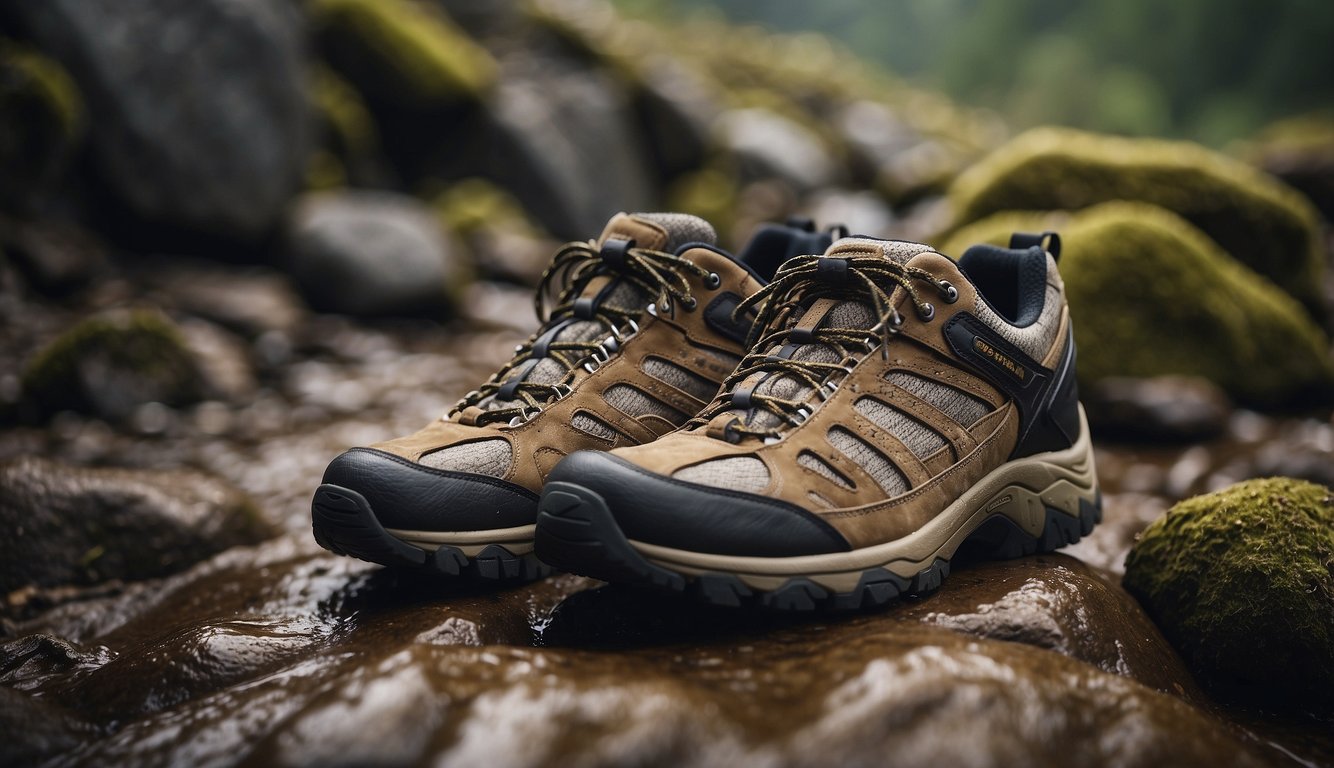
Impact on Hiking and Trail Running Performance
A study has shown that a lighter trail runner can slightly improve average hiking speed compared to heavier footwear. For example, opting for a shoe that weighs 1.31 pounds can help maintain an average speed of 3.17 mph, whereas a slightly heavier shoe at 1.95 pounds may reduce speed to 3.07 mph.
Footwear Weight vs. Average Speed:
- Light Trail Runner (1.31 lbs): 3.17 mph
- Heavier Hiking Shoe (1.95 lbs): 3.07 mph
Weight vs. Protection Trade-off
The choice between a light shoe and one with more heft often comes down to a balance between speed and durability.
Lightweight models, like the Salomon S/Lab Pulsar 2, offer agility for fast and light travel but may provide less underfoot protection and traction compared to their heavier counterparts. The protection of a heavier shoe often comes with added features like a more robust sole or reinforced toe box, which can be beneficial on more technical terrains.
Design and Materials
In selecting trail shoes, I prioritize design and materials that cater to performance and terrain-specific needs. Breathability, waterproof capabilities, and durability are key considerations.
Breathability and Waterproof Features
Breathable materials like synthetic mesh uppers are crucial for maintaining airflow, optimizing comfort during long runs. Shoes featuring Gore-Tex or waterproof membranes provide protection against elements without compromising on breathability – a balance I find essential for varied conditions.
Breathable Features
- Synthetic mesh uppers: Enhance airflow
- Nylon: Often integrated for additional breathability
-
- Gore-Tex: Balances waterproofing with breathability
- Waterproof membrane: Shields against moisture
Durability of Materials
The longevity of trail shoes hinges on their construction. Durable materials like leather can withstand harsh conditions, while some prefer synthetic materials for a lighter feel. Nylon reinforcements are a personal go-to for added resilience without significant weight increase.
- Durability Considerations
- Leather: Offers robustness and abrasion resistance
- Synthetic materials: Provide a lighter, yet durable option
- Nylon: Contributes to overall durability and supports the mesh upper
Shoe Fit and Comfort
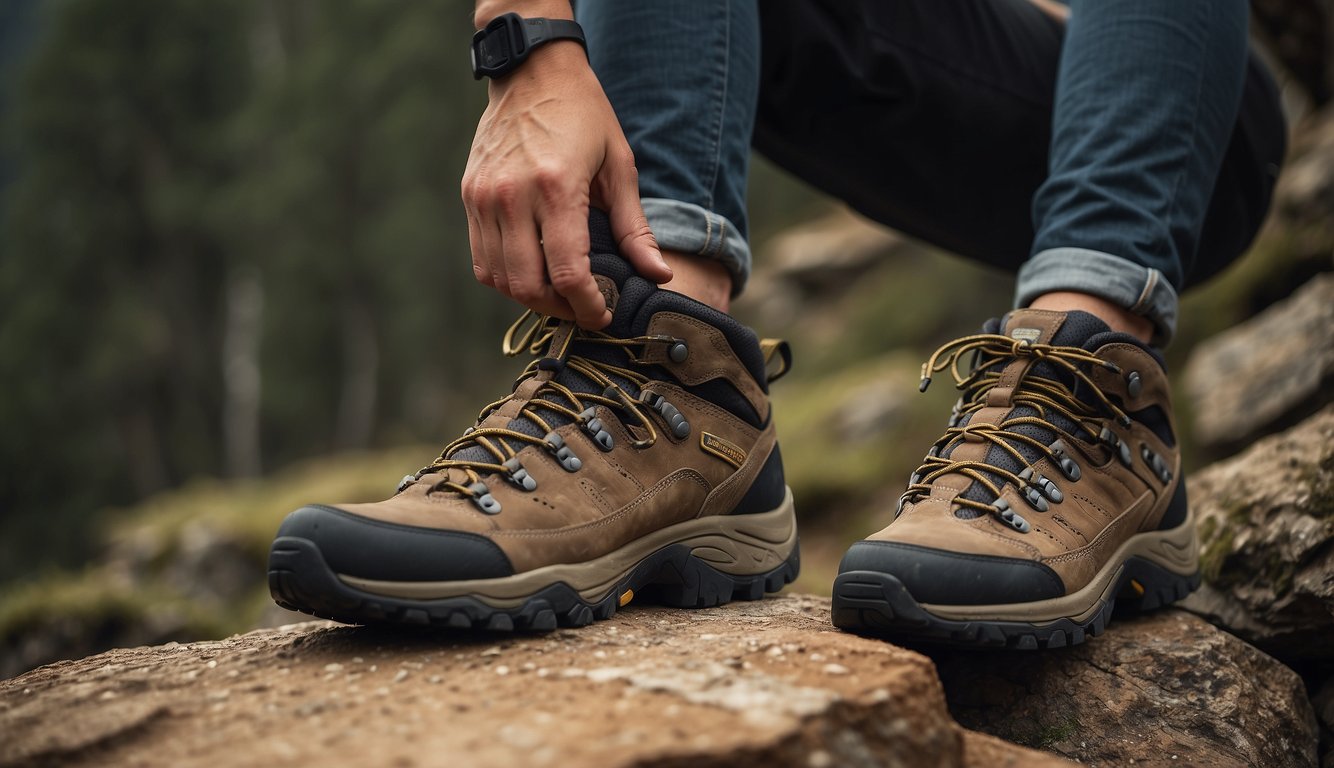
Selecting the correct fit and ensuring appropriate comfort are fundamental to finding the best trail running shoes for any hiker. My experience as a UESCA certified running coach has taught me that these factors greatly influence performance and injury prevention.
Finding the Right Fit
The right fit is crucial. A trail running shoe should hug your midfoot and arch snugly without causing discomfort or restricting blood flow. Here’s a brief checklist I recommend:
- Check for Heel Lift: Less than a quarter inch is ideal when you’re walking.
- Toe Room: Aim for about a thumb’s width between your longest toe and the shoe’s end.
- Midfoot Fit: It should be comfortably snug but not tight.
Cushioning and Support
Proper cushioning and support help absorb shock and provide stability on uneven terrain. Key features include:
- Cushioned Midsole: This should be dense enough to provide rebound yet offer ample comfort.
- Ankle and Foot Support: Look for a shoe that supports natural foot alignment and offers adequate ankle stability.
Remember that the best hiking footwear is a blend of comfort, fit, and support customized to your foot’s specific needs.
Traction and Stability
Selecting the right trail shoes is critical for optimum performance; terrain handling and ankle support are paramount considerations.
Sole Design and Terrain Handling
My experience has taught me that the sole is the foundation of traction. Quality trail shoes feature outsoles with deep lugs that are crucial for gripping varied surfaces. This design improves stability on uneven terrain:
- Deep lugs: Enhance grip on soft, muddy, or loose surfaces.
- Tread Patterns: Specific geometric designs address different terrain types, ensuring effective soil release and traction.
Lug Sole Comparison Table
| Lug Depth | Best For | Traction Level |
|---|---|---|
| Shallow | Hard, dry surfaces | Moderate traction |
| Medium | Mixed or variable terrain | Good traction |
| Deep | Soft, muddy, unstable soil | High traction |
My coaching guidance always emphasizes matching the sole design to the expected trail conditions for best traction and safety.
Ankle Stability and Protection
High-top trail shoes have traditionally been synonymous with ankle stability; they provide support that may prevent rolling or twisting injuries. However, lightweight designs incorporate different methods for ankle protection:
- Built-in Ankle Support: Some modern trail shoes offer semi-rigid frames to reduce ankle rotation without adding weight.
- Protective Elements: Additional cushioning and structured designs around the ankle.
Ankle Support Features
| Feature | Stability Benefit |
|---|---|
| Structured Upper | Prevents excessive foot rotation |
| Cushioning | Absorbs shock, supports natural motion |
| Semi-rigid Frame | Limits ankle movement in rough terrain |
As an expert in trail footwear, I advise looking for a balance between shoe weight and these protective features when stability is a concern. A lighter shoe can still offer sufficient stability if designed with smart features.
Personal Preferences and Conditions

Selecting the weight of trail shoes is not a one-size-fits-all decision. My experience as a UESCA certified running coach has shown that the choice greatly depends on individual needs and the specific conditions of the trails.
Adaptation to Weather and Terrain
From my experience, trail shoe selection must account for weather and terrain factors. For example:
- Weather Conditions: Lighter shoes may suffice in dry, consistent conditions. However, heavier, more robust shoes are better suited for wet or unpredictable weather, as they often offer superior grip and stability.
- Terrain: On rocky or technical trails, a sturdier shoe with more protection might be the priority. Whereas, on well-maintained or even terrain, a lighter shoe could enhance speed and comfort.
Alignment with Hiker’s Priorities
When advising hikers, I consider the following priorities to determine shoe suitability:
- Comfort over Long Distances: Some may prefer lightweight shoes for long-distance hikes to reduce leg fatigue.
- Protection and Support: For those prioritizing foot protection in tough terrain, a heavier shoe with ample cushioning and support might be essential.
Choices in trail shoe weight should reflect the hiker’s preferences and the demands of the terrain and weather conditions they expect to encounter.
Long-Term Considerations
When choosing between heavier or lighter trail shoes, it’s vital to weigh the long-term implications on durability and performance that each type presents. Understanding these factors can influence your comfort, the health of your feet, and the overall lifespan of your footwear.
Break-In Period and Longevity
Heavy-duty trail shoes typically require a break-in period before they feel comfortable. During this time, they can cause blisters if not worn in properly.
However, once broken in, these shoes usually offer superior durability. A pair of robust hiking boots with a Gore-Tex lining, for example, may last well beyond 500 miles, where lighter trail runners might require replacement after 300-500 miles.
| Shoe Type | Break-In Period | Expected Longevity |
|---|---|---|
| Heavier Trail Shoe | Longer | Up to 750+ miles |
| Lighter Trail Shoe | Minimal | Around 300-500 miles |
Pros and Cons of Different Brands
Each manufacturer designs their trail shoes with a specific user in mind, impacting the connection between footwear and terrain. Some brands might use robust materials favoring durability, while others focus on lightweight agility.
For example, a brand that prioritizes rugged durability may use thicker soles and heavier materials, adding to the shoe’s longevity but also its weight.
Heavier Trail Shoes
- Pros: Enhance stability, offer more support, better for challenging terrains.
- Cons: More strenuous on the user, longer break-in period.
Lighter Trail Runners
- Pros: Increase efficiency in movement, cooler and better ventilation reducing the risk of blisters.
- Cons: Less protection, more frequent replacement needed.

